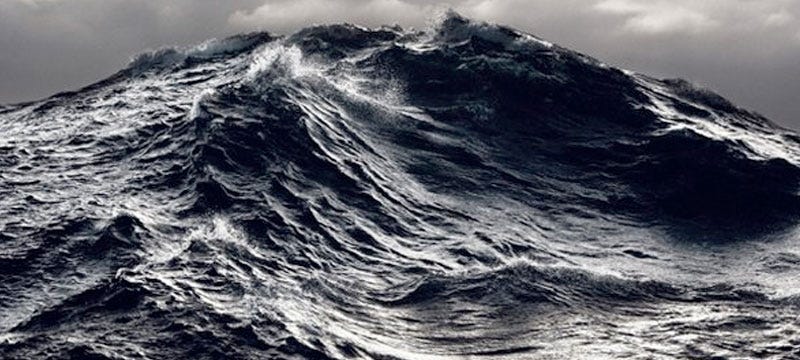Who Governs the High Seas?

The earth’s surface is more than 70% ocean, more water than land, a sea of blue connecting the remaining disconnected green. The nation states claim up to 200 miles from their coasts as areas of “national jurisdiction” over which they have the power to exploit, consume, and regulate. But the vast majority of the ocean lies outside those boundaries, an enormous reservoir of biodiversity that presents a very difficult challenge for governance and enforcement, for protection and sustainability.
In 1967, international diplomats, representing some 160 countries, began discussions and negotiations for what became in 1973 the United Nations Convention on the Law of the Sea that, finally in 1994, was ratified by the requisite number of governments as a means “to define the rights and responsibilities of nations with respect to their use of the world's ocean, establishing guidelines for businesses, the environment, and the management of marine natural resources.”
Since, international experts have been considering and debating how to create a binding instrument to address the changing accessibility of marine areas outside national jurisdiction and the new technologies, increased scientific knowledge, and expanding resource demands that impact them. An agreement was reached to create a process to navigate the many complex issues and meetings are now taking place. An overview by the Institute for Sustainable Development and International Relations, based in Paris, provides useful insight into how such an agreement becomes a reality.

First, one has to recognize the true nature of the problem. There is no global framework for governance, and the existing conditions are mostly characterized by confusion, conflicting interests, inadequate protections, commercial opportunities, and basic disagreement over core principles around which to organize change. Second, there are the collective, not always agreed perspectives of geo-political groups: The European Union; the G77; Africa, the Caribbean, and the Pacific; and the reluctant but active and influential outliers such as the United States, Canada, and Russia. An agenda and list of issues for negotiations include methods for reconciliation of disagreements, the creation of marine protected areas as a conservation structure, the management questions, consultation processes, and environmental assessments, and the integration of technology and skills to allow all nations equal capacity to participate successfully. There will be issues of institutional arrangements by which to decide, coordinate, and review; the potential undermining of existing relationships; the specific and volatile regulation of fisheries; and, of course, the penultimate matter of funding, what does it cost and who pays for it.
If you think this is complex and time-consuming, it is. How long it will take? Will it innovate and truly address the sustainability intentions? If or when agreement is reached, will the nations ratify, contribute, or pay attention? Over the years of following the evolution of international ocean policy, I have become totally respectful of the many individuals who contribute to this process, indeed who dedicate their lives and careers to the detailed, tedious, incremental advances that are required to produce any kind of practical, applicable, effective international agreement. This is the invisible part of policy creation—the continuous meetings in faraway places; the word-by-word, line-by-line, issue-by-issue discussions and consensus agreements; the uncertainty of approval or indecision back home; the rigors and restrictions of international law; and the ever-changing political fronts as dynamic and directional as ocean weather and the sea itself. I could never do this essential work, and I am in awe and grateful for the knowledge, durability, and patience of those who do.
- - -
Who Governs the High Seas? first appeared as a five-minute audio broadcast on World Ocean Radio.
- Login to post comments
-


